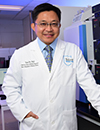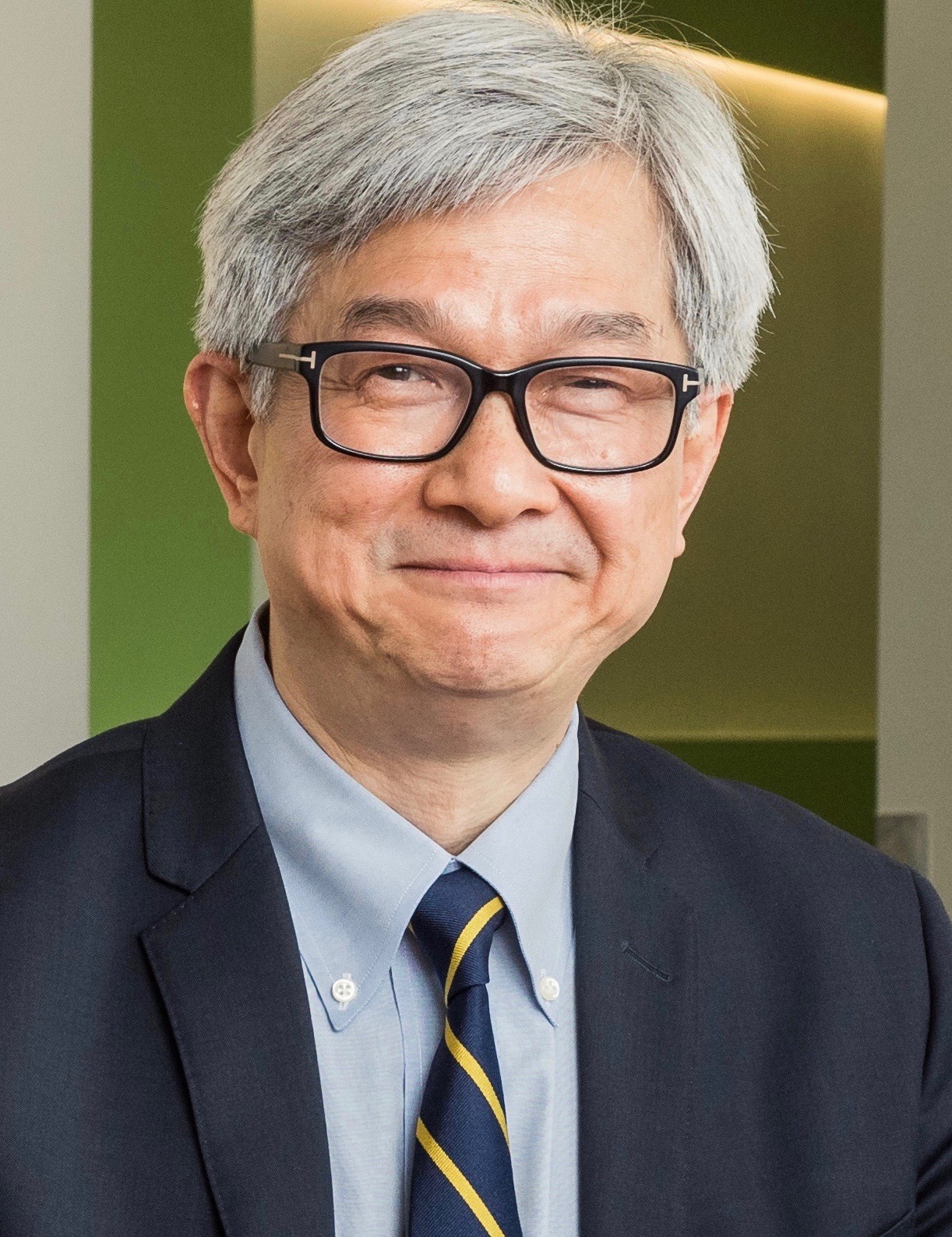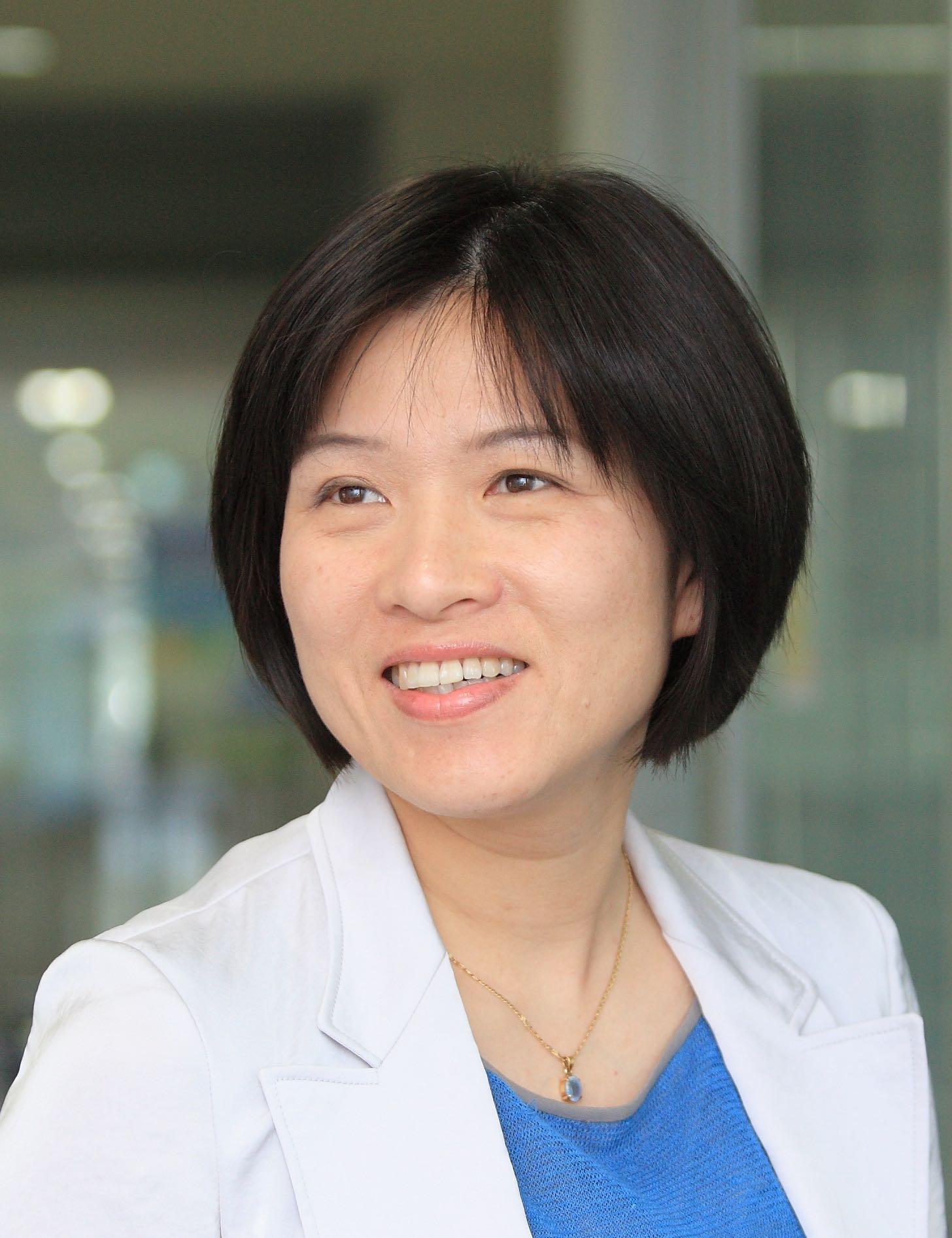
Monday, 18 March 202408:00 | Conference Registration and Materials Pick-Up + Coffee in the Exhibit Hall | |
Session Title: Conference Opening Session - Dx Paradigms 2024 |
| | 09:00 |  | Conference Chair Screening Technologies for the Early Detection of Cancer: Current Challenges and Opportunities
Steve Soper, Foundation Distinguished Professor, Director, Center of BioModular Multi-Scale System for Precision Medicine, The University of Kansas, United States of America
Regardless of the significant improvement in treatment, cancer remains the leading cause of death worldwide accounting for nearly 10 million deaths in 2020. Other than the effects on patients and families, cancer has a tremendous impact on the economy of a country as well. Both mortality and healthcare costs for cancer care could be greatly reduced by early detection of large populations as once cancer has metastasized treatments become difficult and costly and survival rates drop precipitously. Although there is a one-in-three chance of being diagnosed with cancer in one’s lifetime, the screening of cancer in the general population is limited. Screening tests if designed properly can help find the disease early, which here is defined as a pre-metastatic state, when the disease outcome for a patient is more optimistic. Currently, only a few cancers including breast, cervical, colon, lung, and prostate cancers are screened among the general population. But, the current screening tests are not without challenges including modest clinical figures-of-merit, poor compliance, and high complexity in terms of assay format and the need for specialized operators. Thus, improvements in screening strategies will enable more of the general population to be tested resulting in reduced mortality rates. Current screening tests are limited by several factors such as lack of easily accessible markers, suboptimal compliance, low sensitivity for early-stage disease, high false positive rates, varied cost-effectiveness, and the need for complex clinical workflows. For instance, to date there is no screening test for the early detection of ovarian cancer. Although CA-125 blood tests are the most widely used test for ovarian cancer screening, it is not without significant challenges as CA-125 is also often elevated in the blood of people with other conditions such as endometriosis, fibroids, and liver cirrhosis. Thus, the CA-125 test is FDA approved only for assessing treatment efficiency after ovarian cancer diagnosis, as well as for monitoring recurrence. Hence, there is a large societal need to develop new screening technologies to address these drawbacks. We discuss the challenges in currently available screening technologies for cancer and the prospects for developing new screening tests including accessible biomarkers (i.e., liquid biopsy markers) and the associated hardware that would be of keen interest to the bioanalytical community. |
| 10:00 | Mid-Morning Coffee Break and Networking in the Exhibit Hall | 11:00 |  | Keynote Presentation Translational Detection of Diverse Biomarkers Using Solid-State Nanopore Detectors
Adam Hall, Associate Professor of Biomedical Engineering, Wake Forest School of Medicine, United States of America
Nanopore technology is uniquely capable to probing large populations of molecules electrically and on an individual basis. While biological (i.e. protein-based) nanopores have found utility in commercial analytical technologies like DNA and RNA sequencing devices (e.g. Oxford Nanopore), their artificial counterparts have so far been less successful in finding a translational foothold. This is at least partially because few straightforward measurements have been demonstrated for the platform to analyze translationally or clinically important markers that cannot easily be probed with existing technologies. In this presentation, I will discuss our progress in developing solid-state nanopore assays capable of assessing several molecular targets that are difficult to probe by other means. These will include DNA epigenetic modification/lesions, microRNAs, and the glycan hyaluronan. |
| 11:30 |  | Keynote Presentation Hierarchically Organized Block Copolymer-Nanopore Electrode Arrays for Electrochemical Biosensing of Disease Biomarkers
Paul Bohn, Arthur J. Schmitt Professor of Chemical and Biomolecular Engineering and Professor of Chemistry and Biochemistry, University of Notre Dame, United States of America
Hydrophobic gating in biological transport proteins is regulated by stimulus-specific switching between filled and empty nanocavities, endowing them with selective mass transport capabilities. Inspired by these, solid-state nanochannels have been integrated into functional materials to realize electrochemical biosensors with integral mass transport control. Hierarchically organized structures are composed of polystyrene-b-poly(4-vinyl)pyridine (PS-b-P4VP) block copolymer on two-electrode nanopore electrode arrays (BCP@NEAs) housing target-specific enzymes. The BCP enables potential-responsive gating, making it possible to capture and confine analyte species in the attoliter-level NEA volume, enabling redox cycling and current amplification factors >100X. The enzyme-coupled sensing capabilities have been demonstrated with a variety of substrates, including cytokines (IL-6, TNF-alpha), metabolites from lipid nanoparticle degradation, and environmentally-relevant markers. Limits-of-detection <70 fM are obtained in favorable cases. The mass transport-controlled sensing platform described is relevant to next-generation point-of-care devices. |
| 12:00 | Networking Buffet Lunch in the Exhibit Hall | |
Session Title: Circulating Biomarkers as Starting Materials for Dx Development |
| | 13:30 |  | Keynote Presentation Ultra-sensitive Digital Molecular and Viral Assays for Point of Care Diagnosis Using Photonic Crystal Biosensor Microscopy
Brian Cunningham, Professor and Intel Alumni Endowed Chair, University of Illinois at Urbana-Champaign, United States of America
By combining biosensor microscopy that provides high contrast for detecting individual biomolecules and viruses with novel biochemistry methods that can effectively turn each target molecule into many digitally-counted sensing events, it is possible to achieve attomolar-scale limits of detection for cancer-specific nucleic acid target molecules (miRNA and ctDNA) while simultaneously obtaining thousands-to-one selectivity against single base variants. The presentation will describe the use of photonic metamaterials and associated detection instruments to amplify optical absorption and fluorescence emission. The biodetection technology platforms are used to perform assays using nucleic acid strand displacement reactions and CRISPR/Cas chemistry to sense target biomarkers from complex media. We also utilize DNA origami probes in the shape of hand-like “nano-grippers” that selectively recognize and bind with the outer surface proteins of viruses. The “amplify-then-digitize” approach represents a new and powerful paradigm for molecular and viral diagnostics, compared to the “digitize-then-amplify” approach utilized in methods such as droplet digital PCR (ddPCR). Overall, we seek simple, rapid, room temperature, single-step assay methods that can be operate with small, inexpensive, and robust detection systems for applications in point of care diagnostics, laboratory-based diagnostics, and life science research applications. |
| 14:00 |  | Keynote Presentation Digital Flow Cytometry for the Analysis of Single Extracellular Vesicles and Particles
Daniel Chiu, A. Bruce Montgomery Professor of Chemistry, University of Washington, United States of America
We have developed a multi-parametric high-throughput flow-based method for the analysis of individual extracellular vesicles and particles (EVPs), which are highly heterogeneous and comprise a diverse set of surface protein markers as well as intra-vesicular cargoes. Yet, current approaches to the study of EVPs lack the necessary sensitivity and precision to fully characterize and understand the make-up and the distribution of various EV subpopulations that may be present. Digital flow cytometry (dFC) provides single-fluorophore sensitivity and enables multi-parameter characterization of EVPs, including single-EVP phenotyping, sizing, and the absolute quantitation of EVP concentrations and biomarker copy numbers. dFC has a broad range of applications, from analysis of single EVPs such as exosomes or RNA-binding proteins to characterization of therapeutic lipid nanoparticles, viruses, and proteins. dFC also provides absolute quantitation of non-EVP samples such as dyes, beads, and Ab-dye conjugates. |
| 14:30 | Molecular Analysis of Extracellular Vesicles for Cancer Diagnosis and Treatment Monitoring
Hyungsoon Im, Associate Professor, Center for Systems Biology, Mass General Hospital (MGH)/Harvard Medical School, United States of America
In this presentation, I will discuss our recent developments of plasmon-enhanced single extracellular vesicles analysis for cancer diagnosis and drug resistant detection during cancer therapy. | 15:00 |  | Keynote Presentation EV-based Omics Analysis Enabling Personalized Diagnosis
Tony Hu, Professor and Weatherhead Presidential Chair, Tulane University School of Medicine, United States of America
Diagnostics for infectious and malignant diseases often exhibit poor specificity/sensitivity, hindering early detection and treatment evaluation, but development of improved assays is limited by several challenges, including absence of disease-specific factors, low biomarker concentrations, and interfering factors. We have employed an array of sensitive analytic technology platforms to identify key host-pathogen interactions that influence pathogenesis and applies this information to identify diagnostic and predictive biomarkers that can be applied for personalized medicine to improve patient outcomes. We reported the development and validation of several nanotechnoloy-based assays platforms that can be used to quantify protein and nucleic acid changes in EV-associated protein biomarkers, and which have the capacity to target EVs derived from specific cell populations, including EVs derived from Mtb-infected phagocytes and other cell populations involved in granuloma formation. Candidate biomarkers identified will be analyzed using these platforms and correlated with changes in specific granuloma and systemic cell populations. |
| 15:30 | Mid-Afternoon Coffee Break and Networking in the Exhibit Hall | 16:00 |  | Keynote Presentation Saliva EFIRM Liquid Biopsy
David Wong, Felix and Mildred Yip Endowed Chair in Dentistry; Director for UCLA Center for Oral/Head & Neck Oncology Research, University of California-Los Angeles, United States of America
Circulating free DNA (ctDNA) liquid biopsy is rapidly emerging to address the unmet clinical need to detect signature mutations in human cancer based on cell-free circulating tumor DNA (ctDNA) as a surrogate for the tumor genome. The detection of ctDNA via liquid biopsy will facilitate analysis of tumor genomics needed for early detection, molecular targeted therapy, treatment monitoring, onset of acquired resistance mutations, recurrence and minimal residual diseases. Currently, most liquid biopsy approaches are plasma-based using PCR and/or next generation sequencing (NGS) with performance concordance in the 60-70% range compared with biopsy-based genotyping. The exciting horizon ctDNA liquid biopsy is hampered by low copy number of ctDNA, volume requirement for assays and sensitivity of detection platform. Saliva is a bodily fluid that we produce ~600ml per day and harbors multiple omics constituents, including ctDNA that can be harnessed non-invasive for personalized and precision medicine applications, is ideal for ctDNA liquid biopsy. Yet conventional PCR-based technologies cannot detect ctDNA in saliva samples whereas an emerging liquid biopsy platform “Electric Field Induced Release and Measurement (EFIRM)” consistently detect ctDNA from NSCLC patients with actionable mutations in plasma and saliva with concordance of 95%+ with tissue/biopsy-based genotyping including early-stage lesions. EFIRM provides the most accurate targeted detection that can assist clinical treatment decisions for non-small cell lung cancer (NSCLC), with tyrosine kinase inhibitors (TKI) that can extend the disease progress free survival period of these patients. The mechanism of EFIRM for ctDNA detection was recently revealed to detect ctDNA that are ~45 bp single-stranded ctDNA we termed ultra-short ctDNA (usctDNA), whereas the conventional ctDNA are mononucleosomal that are ~160 bp and double-stranded. Conventional ddPCR or NGS cannot detect usctDNAs, where a minimum of 78-bp is needed for amplification. Custom design of ddPCR assay to quantify the EGFR L858R usctDNA in saliva of NSCLC patients revealed that the usctDNA is present at high abundance, mean= 62,636; SD ± 63,334, range: 16,500 to 56,375 copies per mL of saliva, permitting its detection in small saliva volume of 50uL or less, directly without sample processing. These results led to the conclusion that there is an emerging landscape of usctDNA that is present at much higher stoichiometry than mononucleosomal ctDNA permitting detection by the EFIRM technology in micro-litter volume of saliva samples, directly without processing, presenting a new frontier for ctDNA liquid biopsy, addressing the low copy number and limit of detection bottleneck of mnctDNA liquid biopsy. |
| 16:30 | New Insights on Ovarian Cancer Biomarker CA125
Rebecca Whelan, Associate Professor of Chemistry, University of Kansas, United States of America
Through a combination of long-read sequencing, proteomics, and mutation analysis, the Whelan lab has recently developed a new model for the ovarian cancer biomarker CA125. These results and remaining questions will be presented. | 17:00 |  | Keynote Presentation Lab-on-a-Disc For Precision Medicine
Yoon-Kyoung Cho, Professor, Biomedical Engineering, Ulsan National Institute of Science & Technology; Group leader, IBS; FRSC, Fellow of Royal Society of Chemistry, Korea South
Liquid biopsy is a promising alternative to tissue biopsy for cancer clinics, as it can provide valuable information on circulating biomarkers and aid in treatment planning for individual patients. However, the process can be expensive, complex, and requires large sample volumes, with low sensitivity being a significant limitation. To address these challenges, we have developed "lab-on-a-disc" systems that utilize centrifugal force to analyze cancer-related biomarkers in biological fluids such as blood or urine. Our system can isolate and detect liquid biopsy markers such as circulating tumor cells (CTCs), circulating tumor DNA (ctDNA), and extracellular vesicles (EVs). We have tested our system using clinical samples from cancer patients and are excited to introduce our fluid-assisted separation technology, which allows for fast, uniform, clog-free, and efficient filtration. Additionally, we will discuss our recent studies on the potential of extracellular vesicles (EVs) as cancer biomarkers, which could have significant implications for cancer diagnostics. In addition, we will introduce a hand-powered centrifugal bacterial isolation device to determine the bacterial load and to test antibiotics susceptibility which is designed for the usage in resource-limited settings. We believe that our innovative microfluidic tools can accelerate the translation of liquid biopsy technology into real clinical settings, directly impacting patient care. |
| 17:30 | Networking Beer and Wine Reception - Network and Engage with Colleagues in the Pillars Bar, Marriott Rotterdam | 18:30 | Close of Day 1 Main Conference Programming |
Tuesday, 19 March 202408:00 | Morning Coffee and Networking in the Exhibit Hall | 09:00 |  | Keynote Presentation Liquid Gold in Precision Medicine: Exploiting Extracellular Vesicles as Biomarkers to Diagnose and Monitor Cancer
Andrew Godwin, Professor and Division Director, Genomic Diagnostics, Founding Director, Kansas Institute for Precision Medicine, Deputy Director, KU Cancer Center, University of Kansas Medical Center, United States of America
Pathologic analysis of tumor tissue biopsies is the gold standard for the initial diagnosis of cancer. However, recently liquid biopsies, which analyze tumor-derived material circulating in the bloodstream and other bodily fluids, are rapidly gaining traction in the clinic. These tests offer considerable potential in oncology, which include early detection, monitoring treatment response and disease recurrence. Liquid biopsy biomarkers include circulating tumor cells, cell-free DNA, nanoparticles, and extracellular vesicles (EVs). Regarding the latter, EVs are showing great promise as circulating biomarkers. The International Society for Extracellular Vesicles define EVs as particles naturally released from the cell that are delimited by “a lipid bilayer and cannot replicate”. Central among EVs are nano-sized vesicles (ranging from 40 to 150 nm in diameter) of endocytic origin also known as small EVs/exosomes, which are produced and released by most cell types under normal physiologic and in diseased states. sEVs carry cargo representative of their originating cell including nucleic acids, cytokines, membrane-bound receptors, and a wide assortment of other, biologically active lipids and proteins. Since sEVs travel systemically throughout the body, efforts are underway to exploit them as potential biomarkers to detect and monitor disease states. Ways to exploit sEVs for cancer diagnostics and monitoring response to therapy will be discussed. |
| 09:30 |  | Keynote Presentation Real-Time Point-of-Care Diagnostics Using Microfluidic Sensors and Biosensors
Martyn Boutelle, Professor of Biomedical Sensors Engineering, Imperial College London, United Kingdom
We are investigating technologies that take POC measurements from a moment in time that assists diagnosis to a continuous information stream that guides treatment dynamically. Biomarker molecule concentrations can give important information about the health of a person as they are dynamically challenged by acute illness or for example during clinical treatment. Such an approach would allow individualized treatments to be chosen and optimized. We have been developing a range of sensing and biosensing solutions for the invasive, minimally invasive, and non-invasive monitoring of people in healthcare situations. Microfluidics provide a valuable means of clinical sampling and robust quantification of measured signals.
I will describe the key challenges in the development of such integrated sensing devices and present our recent data obtained during models of cardiac arrest and from the neonatal intensive care unit. |
| 10:00 |  | Keynote Presentation Recent Developments in IVDR, Including Another Proposal to Change the Transitional Regime
Erik Vollebregt, Partner, Axon Lawyers, Netherlands
When it comes to the IVDR the constant is change. While companies in the IVDR sector are navigating this new regulatory system for IVDs for Europe the transitional regime keeps changing, with a new amendment proposed for the transitional regime last January. The presentation will address all recent regulatory developments relevant to IVD companies doing business in Europe. |
| 10:30 | Mid-Morning Coffee Break and Networking in the Exhibit Hall | 11:00 | Toward Rapid and Sensitive Point-of-Care Diagnosis of COVID-19 with Nanoplasmonic Sensing Platforms
Jaebum Choo, Professor, Chung-Ang University, Korea South
The SARS-CoV-2 pandemic is causing severe social and economic problems worldwide. RT-PCR has been considered the gold standard for detecting SARS-CoV-2 target genes. However, in RT-PCR, the total diagnostic time, including sample preparation, gene amplification, and detection, takes approximately 3-4 hours. Thus, it is critical to shorten the diagnostic time for rapid on-site diagnosis. Various rapid kits for immune diagnosis, using antigen-antibody reactions, have also been developed to shorten the diagnosis time. However, they have not been adopted as the standard diagnostic method due to their poor sensitivity and accuracy. In particular, the "false-negative" problem of commercialized immunodiagnostic kits is recognized as a severe issue that can exacerbate the spread of SARS-CoV-2. To address these issues, we have developed innovative nanoplasmonic assay platforms with a portable Raman reader for rapid and sensitive diagnostics of SARS-CoV-2 in the field. This technique enables the detection of SARS-CoV-2 with a limit of detection (LoD) of less than 5.0 PFU/mL within 15 minutes. The results of this study demonstrate the possibility of clinical application that can significantly improve the detection limit and accuracy of currently commercialized SARS-CoV-2 immunodiagnostic kits. | 11:30 | Closing Comments, Ideas, Feedback from the Summit Chairperson -- Professor Dr. Steve Soper | 12:00 | Networking Buffet Lunch in the Exhibit Hall -- Networking with Colleagues | 13:30 | Close of Summit |
|

 Add to Calendar ▼2024-03-18 00:00:002024-03-19 00:00:00Europe/LondonEmerging Technologies and Paradigms for In Vitro Dx Europe 2024Emerging Technologies and Paradigms for In Vitro Dx Europe 2024 in Rotterdam, The NetherlandsRotterdam, The NetherlandsSELECTBIOenquiries@selectbiosciences.com
Add to Calendar ▼2024-03-18 00:00:002024-03-19 00:00:00Europe/LondonEmerging Technologies and Paradigms for In Vitro Dx Europe 2024Emerging Technologies and Paradigms for In Vitro Dx Europe 2024 in Rotterdam, The NetherlandsRotterdam, The NetherlandsSELECTBIOenquiries@selectbiosciences.com